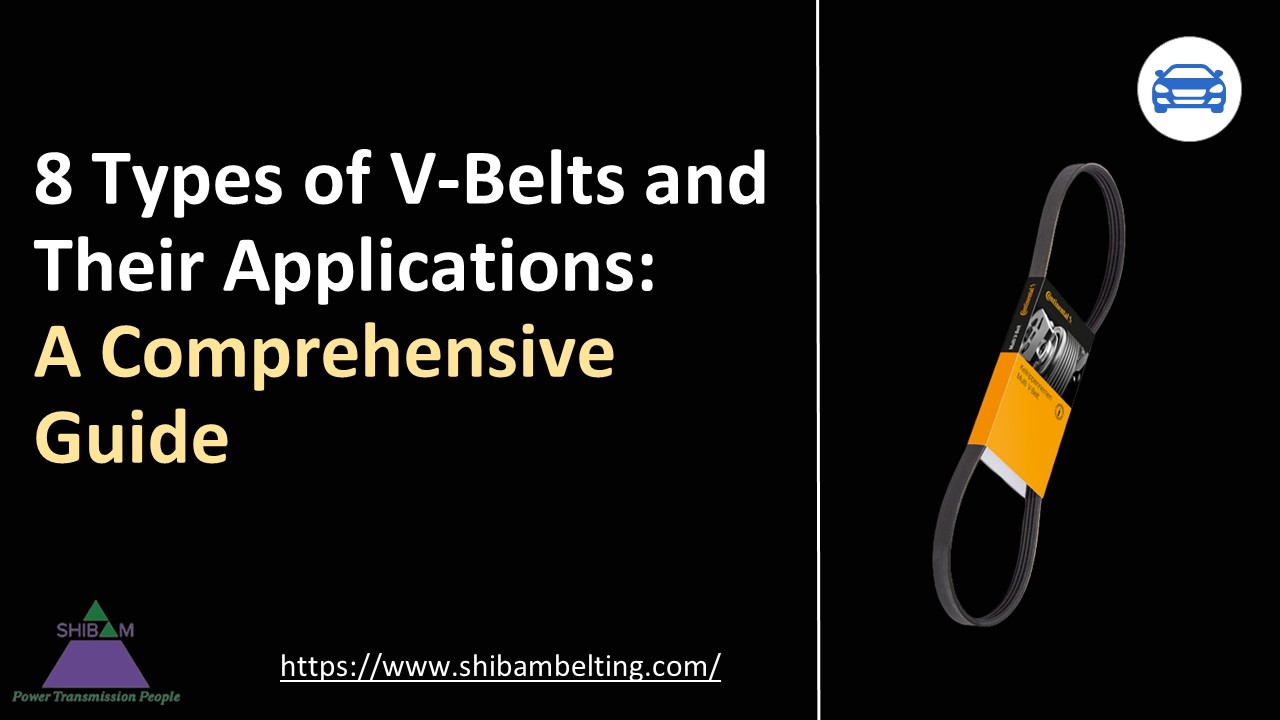8 Types of V-Belts and Their Applications: A Comprehensive Guide - PowerPoint PPT Presentation
Title:
8 Types of V-Belts and Their Applications: A Comprehensive Guide
Description:
V-belts come in various types and sizes, each with its unique features and applications. Choosing the right V-belt for your application is essential to ensure optimal performance and longevity. For more information, visit: – PowerPoint PPT presentation
Number of Views:2
Title: 8 Types of V-Belts and Their Applications: A Comprehensive Guide
1
8 Types of V-Belts and Their Applications
A Comprehensive Guide
- https//www.shibambelting.com/
2
INTRODUCTION
- V-belts are one of the most commonly used power
transmission belts, popular for their ability to
transmit high torque efficiently while reducing
slippage. They have been in use for over a
century and are still widely used today. There
are several types of V-belts available in the
market, and it is essential to understand the
differences between them to choose the right one
for your application. In this blog post, we will
discuss the various types of V-belts and their
applications.
3
1. Classical V-belts
- Classical V-belts are the most common type of
V-belts, also known as standard V-belts. They
have a trapezoidal cross-section and come in
different sizes, designated by letters. The most
common sizes are A, B, C, D, and E. Classical
V-belts are suitable for low to medium power
transmission applications and are commonly used
in agricultural machinery, HVAC systems, and
other general-purpose applications.
4
2. Narrow V-belts
- Narrow V-belts, also known as Micro V-belts, have
a narrower cross-section than classical V-belts.
They are designed for high-speed, high-torque
applications and are commonly used in automotive
applications such as power steering pumps, air
conditioning compressors, and alternators. They
also have a longer service life and are more
efficient than classical V-belts.
5
3. Double V-belts
- Double V-belts, as the name suggests, have two
V-shaped grooves on their inner surface. They are
designed to transmit higher power than classical
V-belts and are commonly used in industrial
applications such as machine tools, compressors,
and pumps. Double V-belts offer better stability
and reduced vibration compared to classical
V-belts.
6
4. Cogged V-belts
- Cogged V-belts have a notched or toothed design
on their inner surface, which increases their
surface area and allows for better flexibility.
This design also reduces slippage and increases
power transmission efficiency. Cogged V-belts are
suitable for high-torque, high-speed applications
and are commonly used in lawn mowers, snow
blowers, and other small engine applications.
7
5. Raw Edge V-belts
- Raw edge V-belts have a flat top surface, which
increases their surface area and allows for
better power transmission. They are suitable for
high-speed, high-torque applications and are
commonly used in automotive applications such as
engines and transmissions. Raw edge V-belts are
also more durable and have a longer service life
than classical V-belts.
8
6. Variable Speed V-belts
- Variable speed V-belts are designed to operate
efficiently at different speeds. They have a
tapered cross-section that allows for better
flexibility and adapts to different pulley
diameters. They are commonly used in industrial
applications such as conveyors, compressors, and
generators.
9
7. Banded V-belts
- Banded V-belts consist of several classical
V-belts joined together with a band. This design
offers better stability and reduces vibration
compared to classical V-belts. Banded V-belts are
suitable for high-torque, high-speed applications
and are commonly used in industrial applications
such as pumps, compressors, and generators.
10
8. Kevlar V-belts
- Kevlar V-belts are made from Kevlar fibers, which
are known for their strength and durability. They
are suitable for high-torque, high-speed
applications and are commonly used in industrial
applications such as agricultural machinery, lawn
mowers, and snow blowers. Kevlar V-belts offer
better resistance to abrasion and heat compared
to classical V-belts.
11
CONCLUSION
- In conclusion, V-belts come in various types and
sizes, each with its unique features and
applications. Choosing the right V-belt for your
application is essential to ensure optimal
performance and longevity.
12
Thanks!
- Do you have any questions?
- 971 25548117 shibamtraders_at_gmail.com
https//www.shibambelting.com/































